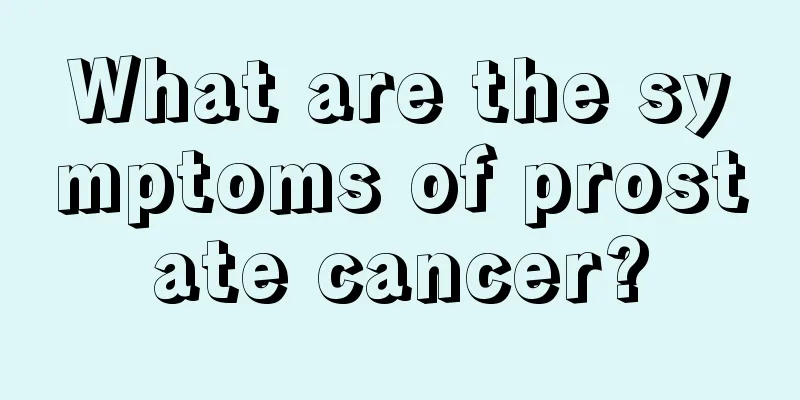What are the symptoms of testicular cancer

|
What are the symptoms of testicular cancer? If your testicles are uncomfortable, you will naturally think of this problem, especially now that various cancers are frequent and high, so that everyone is afraid of cancer. Therefore, early detection and early treatment are very important principles. Testicular cancer is a malignant tumor exclusive to men. Next, let's talk about the symptoms of testicular cancer. Physical examination can palpate the enlarged, tough, heavy testicle on the affected side, and the transillumination test is negative. Testicular tumor markers, human chorionic gonadotropin (HCG) and alpha-fetoprotein (AFP) concentrations may be increased in the serum of patients with seminoma, choriocarcinoma, embryonal carcinoma or mixed germ cell tumor, respectively. B-ultrasound shows that the testicles are uniformly enlarged, the echo is enhanced but uneven, and the blood flow signal is strong. CT examination mainly observes the metastasis of retroperitoneal lymph nodes. Testicular tumor is one of the common tumors in urology. It is almost always malignant, and there are three peaks in the age of onset: yolk sac tumor (infantile embryonal tumor) is the most common in infancy; various types of testicular tumors can be seen between the ages of 20 and 40, but seminoma is still the most common, and seminoma is the main tumor after the age of 70. Its cause is still unclear, and it is currently believed that its onset is related to both genetic and acquired factors. Among them, it is most closely related to cryptorchidism. The chance of cryptorchidism developing tumors is 10 to 14 times greater than that of normal people. Cryptorchidism in the abdominal cavity is higher than that in the groin. Testicular fixation does not reduce the incidence of malignant changes, but it can make tumors easier to detect. The most common symptom is a gradual, painless enlargement of the testicles with a feeling of heaviness. The enlarged testicles of seminoma often maintain the testicular contour and have a consistent texture, while teratoma is nodular and has inconsistent hardness and softness. About 10% of patients feel pain due to intratesticular bleeding or infarction, and 10% of patients may have metastatic symptoms, such as large retroperitoneal lymph node metastasis, compression of nerve roots, back pain, lung metastasis may cause cough and dyspnea, duodenal metastasis may cause anorexia, nausea and vomiting, bone metastasis may cause bone pain, etc. Testicular Leydig cell tumor should be considered when children have testicular masses and symptoms of precocious puberty, or adults have gynecomastia and loss of libido. The cause of testicular cancer is still unknown, and it is currently believed that its onset is related to both genetic and acquired factors. Among them, cryptorchidism is the most closely related. The chance of developing tumors in cryptorchidism is 10 to 14 times greater than that in normal people, and cryptorchidism in the abdominal cavity is more likely than in the groin. |
<<: What are the common symptoms of testicular cancer
>>: Introducing the symptoms of testicular cancer
Recommend
Female hallux valgus corrector
The symptoms of hallux valgus are that the thumbs...
How to effectively remove scale with vinegar
Using vinegar to remove scale is a convenient, si...
How to prevent lung cancer and avoid the disease? To prevent lung cancer, we should start from three aspects
Lung cancer affects people's lives and mental...
How can I increase estrogen?
In life, we all know that if a woman’s estrogen l...
Behaviors that harm the liver
Since when, liver disease has become a disease th...
How to relieve gout joint pain
If you have gout, it often causes joint pain. Thi...
Why do I have a double chin even though I'm very thin
Do you think that only people who are too fat can...
Is acupuncture good for a long time?
Acupuncture is a very important method of TCM in ...
Cold hands and feet and sweating
Regarding the problem of cold hands and feet that...
What should I do if multiple myeloma relapses?
Multiple myeloma relapsed? Are you feeling panic ...
How can pickled duck eggs produce oil?
Many people like to eat salted duck eggs, especia...
How much does chemotherapy for colon cancer cost
Colon cancer has always been a disease that peopl...
What are the treatment options for lung cancer? Lung cancer patients choose three major diagnosis and treatment options
We must not relax in the treatment of lung cancer...
The hair on the big toe is particularly long
In daily life, many people have very long hair on...
What is the normal blood sugar level two hours after a meal?
Most of the food we eat contains some sugar, and ...









